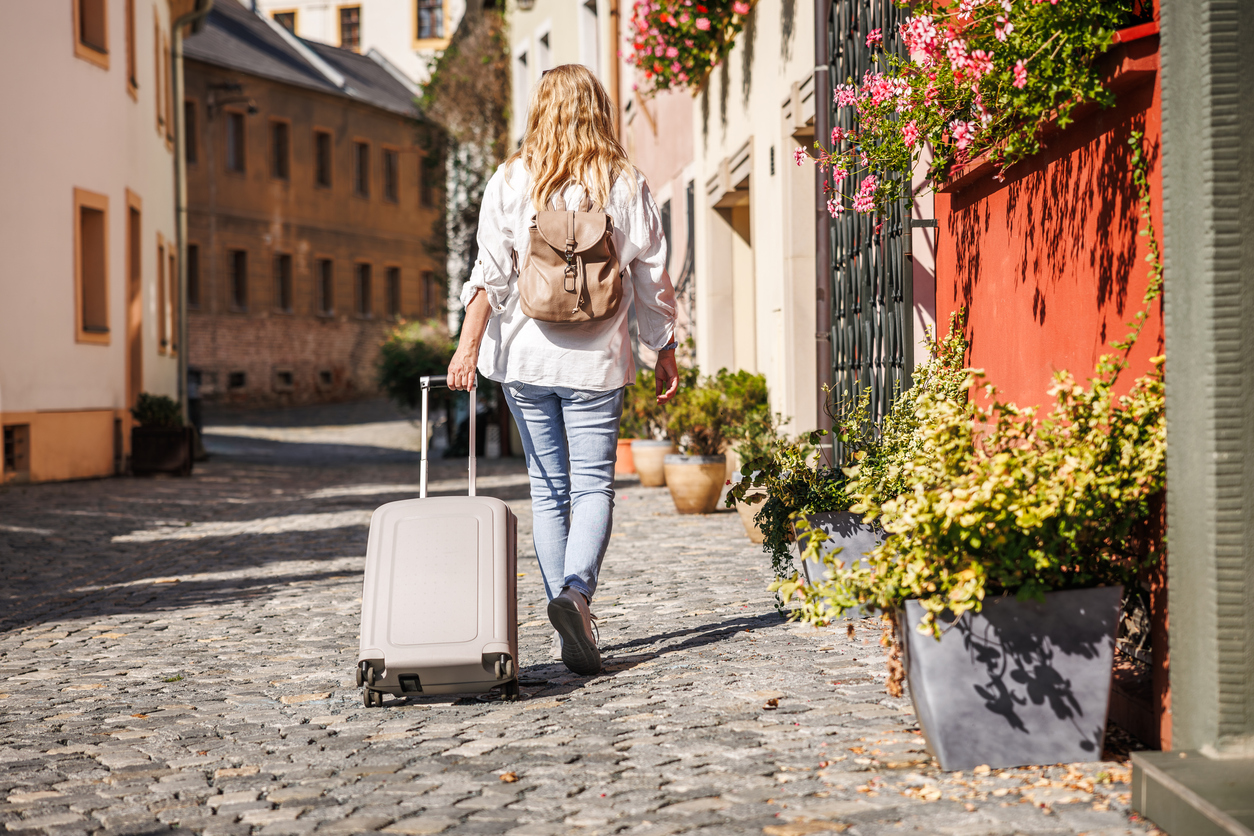
You don’t need a giant suitcase for a two-week trip. You don’t even need a checked bag. With a little planning and a few smart packing moves, you can travel carry-on only for 14 days — no matter where you’re going.
Less weight. No lost luggage. No waiting at baggage claim. Just mobility and peace of mind.
Here’s how to do it, step by step.
Step 1: Choose the Right Bag
Start here, or everything else falls apart.
Ideal size: 35–45 liters. That’s small enough to fit in overhead bins, big enough to carry what matters.
What to look for:
- Soft-sided over hard shell (more flexible when space is tight)
- Compression zippers
- Separate laptop sleeve (for airport ease)
- Backpack or hybrid design for walkability
- Front-loading, not top-loading — easier access
Popular picks:
- Peak Design Travel Backpack (45L)
- Nomatic Navigator
- Osprey Farpoint 40
- Away The Carry-On (for rollers)
No giant roller bags. No duffels you have to dig through. You want a smart, structured carry-on that forces you to pack efficiently.
Step 2: Follow the 5-4-3-2-1 Rule (with a Twist)
This rule gives you just enough without overpacking:
- 5 tops (mix of tees, tanks, and 1 nicer shirt)
- 4 bottoms (2 pants, 1 shorts/skirt, 1 comfy lounge/hike/flight pair)
- 3 pairs of shoes (wear one, pack two max)
- 2 jackets/layers (one light, one warm or rainproof)
- 1 week of underwear and socks
Add 1–2 extras: swimwear, gym gear, or sleepwear, depending on your destination.
Stick to a neutral color palette so everything mixes and matches. You don’t need 14 outfits—you need 7 that remix into more.
Step 3: Use Packing Cubes (Compression Matters)
Packing cubes don’t just organize your stuff. They compress it.
Use:
- One cube for shirts and tops
- One for bottoms and outerwear
- One small cube for underwear, socks, and sleepwear
Compression-style cubes shrink bulk by up to 40%. You’ll be surprised what fits in your bag when everything is rolled and zipped tight.
Bonus: they help keep clean and dirty clothes separate.
Step 4: Limit Toiletries and Go Solid
TSA limits are strict — and so is your space. Keep it lean.
Best moves:
- Use solid shampoo, conditioner, and soap bars (Lush, Ethique)
- Refill 100ml travel bottles with your daily essentials
- Skip anything your hotel or Airbnb will provide
- Leave “just in case” items at home — you can buy them locally if needed
Your whole kit should fit in one clear quart-size bag. If it doesn’t, cut again.
Step 5: Wear Your Bulkiest Gear on the Plane
Headed to Iceland? Wear your boots and coat.
Headed to Vietnam? Carry your hoodie on board.
Don’t pack:
- Hiking shoes
- Heavy jacket
- Jeans
Wear them. Airplanes are cold anyway, and airport security doesn’t care if your layers look ridiculous. You’ll save serious space.
Step 6: Bring Multi-Use Accessories
You don’t need more stuff — you need smarter stuff.
Essentials:
- Buff or scarf (cold? face cover? towel? check.)
- Packable daypack (for daily exploring, beach, groceries, hikes)
- Collapsible water bottle (saves space, saves money)
- Travel adapter (one that covers all plug types with USB-C)
Optional: Kindle, sunglasses, hat, packable rain shell. But everything must earn its spot.
Step 7: Do Laundry Once
This is the secret.
You don’t need 14 outfits. You need 6–7, then wash halfway.
Options:
- Book an Airbnb with laundry
- Use a hotel laundry service (more common than you think)
- Find a laundromat or ask your host for help
- Hand-wash in the sink and hang dry overnight (quick-dry fabrics help)
This single step cuts your clothing needs in half. And if you’re worried about time? Laundry takes less than an hour. Lugging a suitcase for 14 days takes longer.
Step 8: Digital Clean-Up = Physical Lightness
Traveling carry-on isn’t just about clothes. Digitally downsize too.
- Download offline maps and translation tools
- Use mobile boarding passes and scanned copies of IDs
- Load a small charging kit: one adapter, two cables, small power bank
- Bring noise-canceling earbuds, not bulky headphones
- Leave your laptop unless you need it — a tablet + keyboard or even a good smartphone setup handles most tasks on the road
Step 9: Know What Not to Pack
Leave behind:
- Extra “what-if” outfits
- Full-size anything
- Heavy books (use an e-reader or app)
- Beach towels (most places provide or rent them)
- Extra shoes you won’t wear
Traveling light means saying no to comfort clutter. Focus on what’s essential, not what’s convenient.
Step 10: Use a Personal Item Wisely
Most airlines allow one carry-on plus one personal item. Don’t waste it.
Best personal item options:
- Slim backpack with tech, charger, snacks, documents
- Crossbody bag for essentials, water, sunglasses, and money
- Expandable tote that tucks under your seat and helps carry overflow
Keep your personal item compact, but smartly packed — it’s your in-flight HQ and daily carry.
Two weeks. One carry-on. Zero problems.
You don’t need more gear. You need better choices. Pack smart, stay mobile, and focus on the freedom that comes from traveling light.
Because the less you carry, the more you notice — the streets, the people, the places you came to see. No baggage claim required.







